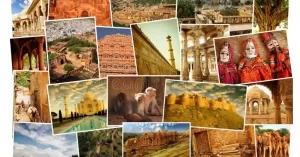Cultural Heritage

برای دانلود فایل آموزشی و پی دی اف لغات مروط به Cultural Heritage روی لینک زیر کلیک کنید:
- Heritage – میراث
- Tradition – سنت
- Culture – فرهنگ
- Ancestors – اجداد
- Legacy – میراث
- Preservation – حفاظت
- Artifacts – آثار باستانی
- Folklore – افسانههای محلی
- Rituals – آداب و رسوم
- Customs – رسوم
- Language – زبان
- Cuisine – آشپزی
- Festivals – جشنوارهها
- Monuments – آثار تاریخی
- Architecture – معماری
- Craftsmanship – صنایع دستی
- Ancestral – اجدادی
- Heritage site – سایت میراث
- Intangible – نامشهود
- Oral history – تاریخ شفاهی
- Cultural identity – هویت فرهنگی
- Community – جامعه
- Diversity – تنوع
- Conservation – حفاظت
- Restoration – بازسازی
- Exhibition – نمایشگاه
- Tradition bearers – حاملان سنت
- Practices – شیوههای زندگی
- Art – هنر
- Music – موسیقی
- Dance – رقص
- Literature – ادبیات
- Beliefs – باورها
- Historical – تاریخی
- Significance – اهمیت
- Interpretation – تفسیر
- Education – آموزش
- Awareness – آگاهی
- Archaeology – باستانشناسی
- Cultural exchange – تبادل فرهنگی
- Heritage management – مدیریت میراث
- Documentation – مستندسازی
- Sustainability – پایداری
- National identity – هویت ملی
- Preservation methods – روشهای حفاظت
- Globalization – جهانیسازی
- Artistic expression – ابراز هنری
- Cultural policy – سیاست فرهنگی
- Heritage tourism – گردشگری میراث
- Intergenerational – بیننسلی
Text Using the Vocabulary
encompasses the traditions, customs, and legacies passed down from our ancestors. It is essential for shaping our cultural identity and fostering a sense of community.
Preservation of cultural heritage includes safeguarding not only tangible artifacts, such as monuments and historical buildings, but also intangible elements like folklore, rituals, and languages.
The significance of cultural heritage lies in its ability to connect generations and provide insight into our history. Festivals and traditional practices allow communities to celebrate their unique customs and artistic expressions.
Cuisine, music, and dance are also vital components of cultural heritage that enrich our lives and promote diversity.
Heritage sites are often focal points for education and awareness, attracting visitors interested in the historical and cultural narratives they represent. Through heritage tourism, communities can share their stories while benefiting economically.
This requires careful heritage management to ensure sustainability and respect for local traditions.
Archaeology plays a crucial role in uncovering artifacts that tell the stories of our past.
By documenting these findings, we can enhance our understanding of different cultures and promote cultural exchange. Additionally, the involvement of tradition bearers is vital in keeping practices alive and ensuring that knowledge is passed down through generations.
In a rapidly globalizing world, it is essential to maintain a balance between modernization and the preservation of cultural heritage.
Policies that support cultural conservation and emphasize the importance of heritage can help communities thrive while honoring their roots. Ultimately, a commitment to preserving our cultural heritage enriches society and fosters a lasting legacy for future generations.
امیدوارم مقاله برای شمما مفید باشه.


